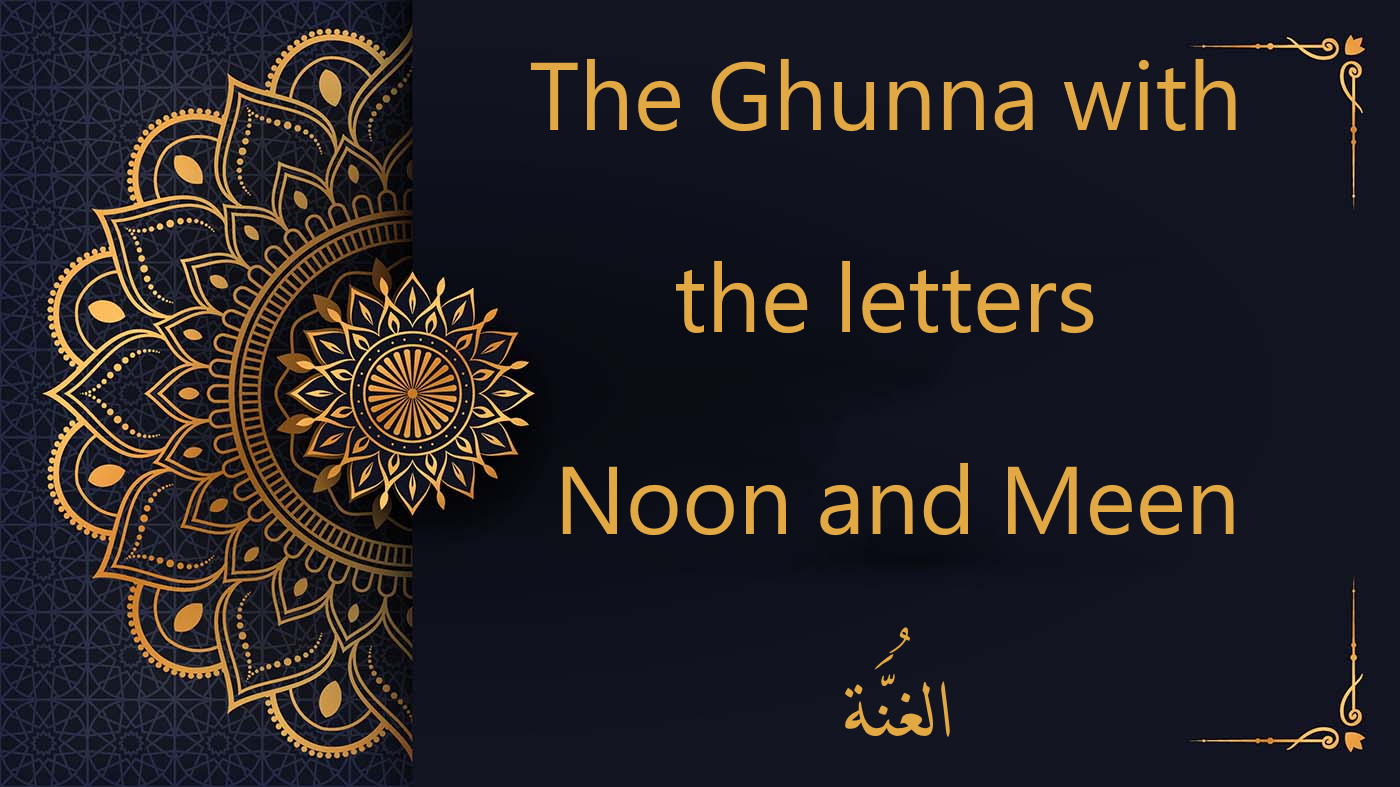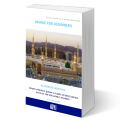
Ghunna, a nasalization feature, is essential for the letters Noon ن and Meem م. This holds true irrespective of their pronunciation state, be it vocalized, with a sukoon, during idhar, idgham, or even following ikhfa tajweed rules. Its sound originates from the nose, known as خَيْشُوم.
The most pronounced and elongated form of ghunna is observed in idgham or shadda.
Example:
وَمَا أَنزَلَ اللَّـهُ مِنَ السَّمَاءِ مِن مَّاءٍ فَأَحْيَا بِهِ الْأَرْضَ
and what Allah has sent down from the heavens of rain (2:164)
قُلْ أَعُوذُ بِرَبِّ النَّاسِ
Say, “I seek refuge in the Lord of mankind, (114:1)
وَمَا مُحَمَّدٌ إِلَّا رَسُولٌ قَدْ خَلَتْ مِن قَبْلِهِ الرُّسُلُ
Muhammad is not but a messenger. [Other] messengers have passed on before him. (3:144)
Example:
إِنَّا أَنزَلْنَاهُ فِي لَيْلَةِ الْقَدْرِ
Indeed, We sent the Qur’an down during the Night of Decree. (97:1)
Examples:
كَيْفَ تَكْفُرُونَ بِاللَّـهِ وَكُنتُمْ أَمْوَاتًا فَأَحْيَاكُمْ
How can you disbelieve in Allah when you were lifeless, and He brought you to life; (2:28)
بَلْ تُؤْثِرُونَ الْحَيَاةَ الدُّنْيَا
But you prefer the worldly life (87:16)
صِرَاطَ الَّذِينَ أَنْعَمْتَ عَلَيْهِمْ غَيْرِ الْمَغْضُوبِ عَلَيْهِمْ وَلَا الضَّالِّينَ
The path of those upon whom You have bestowed favour, not of those who have evoked [Your] anger or of those who are astray. (1:7)
كُلٌّ آمَنَ بِاللَّـهِ وَمَلَائِكَتِهِ وَكُتُبِهِ وَرُسُلِهِ
All of them have believed in Allah and His angels and His books and His messengers, (2:285)
Example:
وَنَادَىٰ أَصْحَابُ النَّارِ أَصْحَابَ الْجَنَّةِ أَنْ أَفِيضُوا عَلَيْنَا مِنَ الْمَاءِ أَوْ مِمَّا رَزَقَكُمُ اللَّـهُ
And the companions of the Fire will call to the companions of Paradise, “Pour upon us some water or from whatever Allah has provided you.” (7:50)
A common belief is that the ghunna of noon and meem with shadda lasts for “harakatayn” or the span of two vowels. However, Dr. Aymen Sued, in his chapter on the duration of ghunna, posits that its duration extends beyond this commonly held belief.
In terms of technique:
Ghunna Naqis (Partial Nasalization): The lips should slightly part, akin to the space needed for a leaf to pass through.
Ghunna Kamil (Complete Nasalization): The lips should meet but without excessive pressure to ensure the subsequent letter is articulated accurately.
A note on practice: While many integrate ghunna into their recitation for all letters, it’s essential to ensure the nasal septum is closed during the pronunciation of all letters, exempting meem and noon.
This Tajweed rules lesson has come to a conclusion. Insha’Allah, our next lesson will delve into the intricacies of Noon Sakeena and Tenween.
At the Al-dirassa Institute, we provide an accessible path to mastering Tajweed under the guidance of skilled instructors. Should you wish to pursue this further, we warmly invite you to reach out to us.
Discover the experiences of our delighted clients who have thoroughly enjoyed utilizing this standout feature.
Alhamdulillah I‘m very pleased with the arabic and Qur’an lessons I receive from teacher Umm Tasneem and I‘m also content with the al-dirassa administration team who were very quick in answering any questions I had. In a month I progressed a lot and I cannot wait to continue my studies with al-dirassa. May Allah reward everyone at al-dirassa.
Verified review - view original
My Qur’an teacher is fantastic, she teaches me in a loving and kind way where I look forward to the lessons and learn so much. My Arabic teacher is equally as nice and has a lot of patience with me, she has great expertise in the field and I’ve progressed really quickly with her. Thank you Al-dirassa!
Verified review - view original
Don’t want to go through the translation anymore?
30 free minutes with your qualified Egyptian teacher.
Al-dirassa center (Markaz ad-dirassa in Arabic) is an institute specialized in the online tuition of the literal Arabic language, the memorization, and the recitation of the Holy Quran as well as the Islamic sciences by distance courses via Skype and Zoom.

Al-dirassa Institute offers you a gift to help you begin your journey to being fluent in Arabic and learning the Quran.

Al-dirassa Institute offers you a gift to help you begin your journey to being fluent in Arabic and learning the Quran.